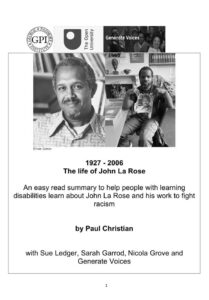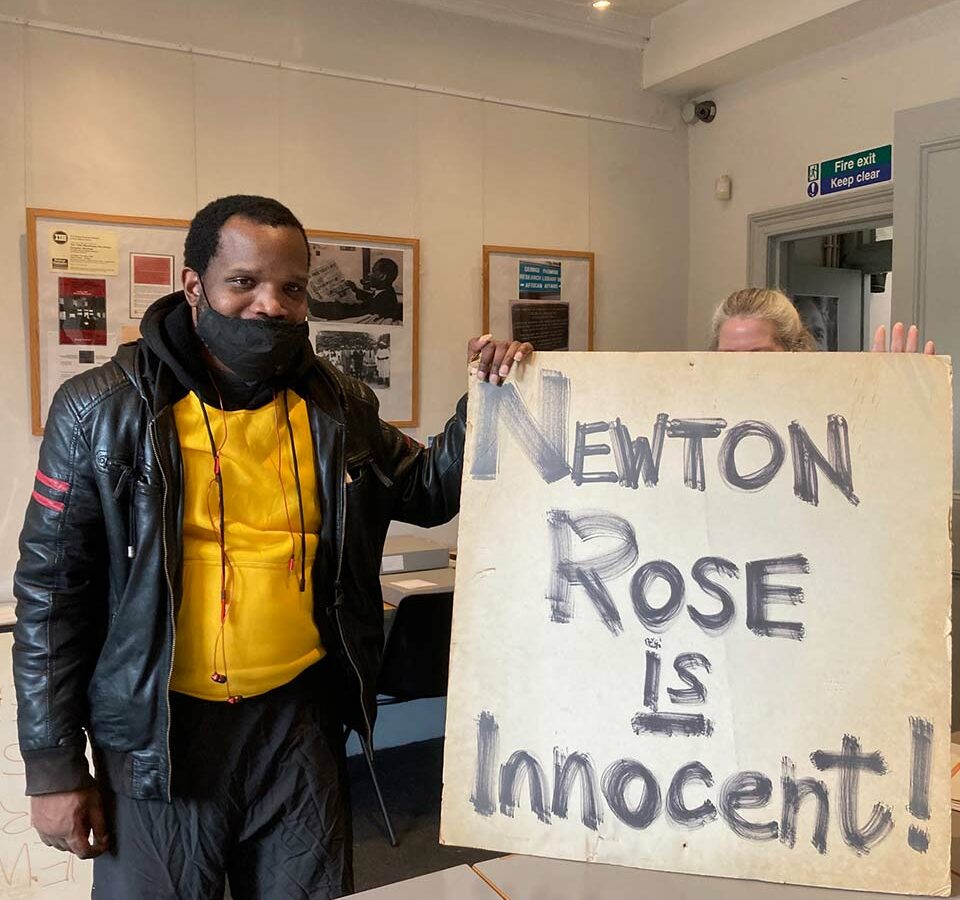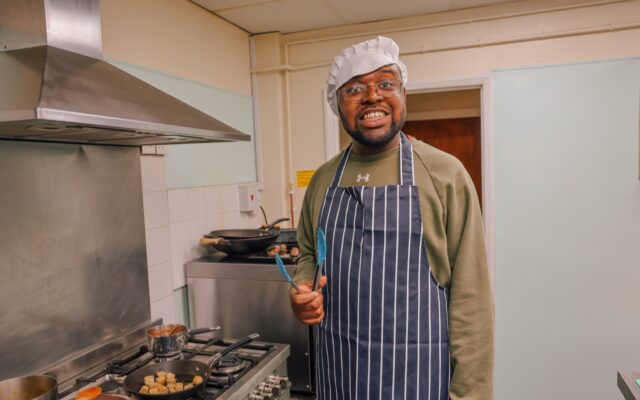I want to make black history come alive for people with learning disabilities.
I am a black British man of Jamaican heritage who has lived with the label of learning disability since I was a child.
I was never taught about black history at school. As an adult, this information was not available in a format I could understand. Because of that, I feel I lost a part of myself.
In the last issue of Community Living, I wrote about working with the George Padmore Institute to support people with learning disabilities to access this important black history archive.
The centre, in north London, is named after influential pan-Africanist and writer George Padmore.
This second article focuses on collaborating with the institute to make new easy-read materials, with information in simple language, illustrated with pictures.
Following the brutal killing of George Floyd in 2020, I began researching and writing in support of Black Lives Matter. I asked Sue Ledger, an Open University researcher, to support me.
We work as co-researchers and co-writers on the project with the institute and in preparing this article.
Finding black history
Gaining access to black history is not just my problem but one for people with learning disabilities more widely.
Generate Voices, for example, is a group of people with learning disabilities, facilitated by London‐based community support and employment organisation Generate. The group came together to take action against racism, raising the lack of accessible black history as a problem.
My work with the institute involved five visits. I interviewed archivist Sarah Garrod and researched documents and images.
We made easy-read documents for two collections that seemed important to share: the life and work of John La Rose, a black British writer and publisher who led campaigns to fight for the rights of black people in the UK (pictured); and the 1981 New Cross fire where 13 young black people tragically died at a birthday party. Some people thought the fire was a racist attack but no one was ever arrested.
I wrote a third document introducing the easy-reads and explaining the importance of accessible information.
Taking lots of photographs helped me to remember the stories and choose the best images. The first drafts were reviewed by speech and language therapist and story-sharing expert Nicola Grove.
Generate Voices acted as critical reviewers. Generate members engaged with the stories, started new conversations about racism and history and said the work provided them “with the freedom and platform to fully express their views, opinions and suggestions”.
Their feedback led to substantial improvements in the easy reads which are now being finalised. They will be available by the end of May at the institute and on the Open University Social History of Learning Disability website.
Garrod says: “I hope we can eventually create easy reads for all our collections. We need to work with everyone to ensure that our resources are useful and easy to follow.”
Writing easy-read material was new to me and the whole process, including research and critical review, took over 12 months.
The hardest part was deciding what to leave out. John La Rose, for example, did so many things.
A model for the future
 Future materials could be produced in a much shorter period. I hope the process we developed with one black history archive will encourage similar organisations to make their own collections more accessible.
Future materials could be produced in a much shorter period. I hope the process we developed with one black history archive will encourage similar organisations to make their own collections more accessible.
For our part, it’s important we speak up and claim our right to better understand history and the contributions of the black community past and present.
Today, black people continue to face racism both individually and from systems embedded in institutions. I hope trying to get the word out about black history will make it easier for younger people, black and white, to understand and recognise prejudice. I see this work as an important part of tackling racism today.





